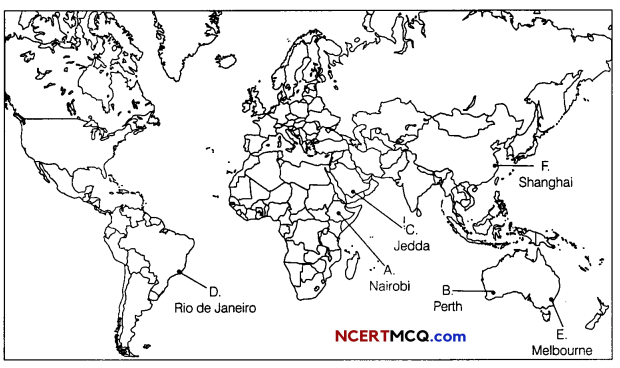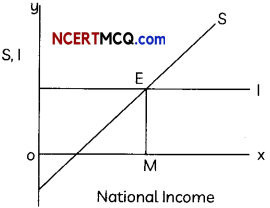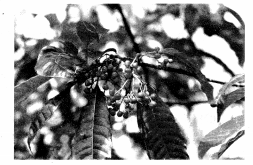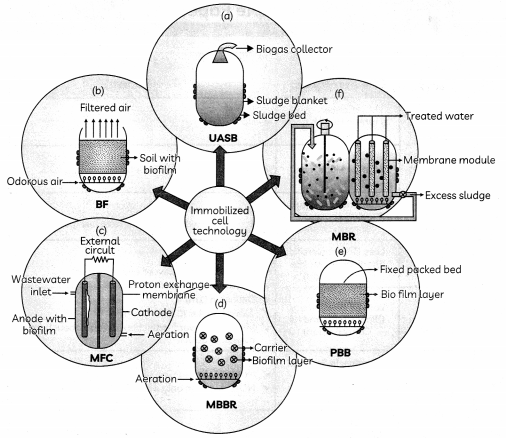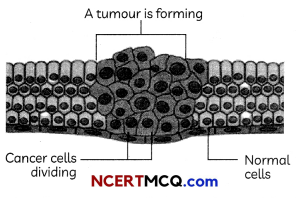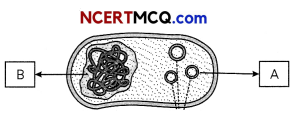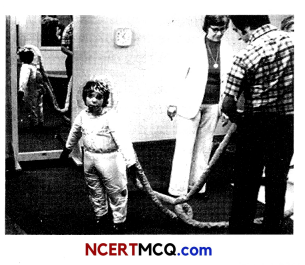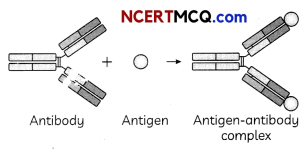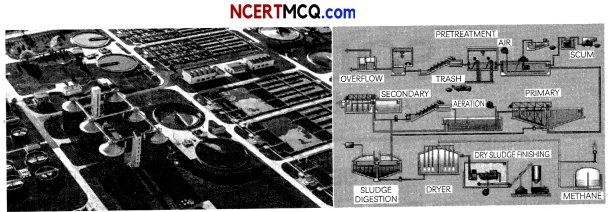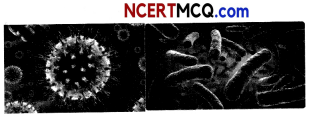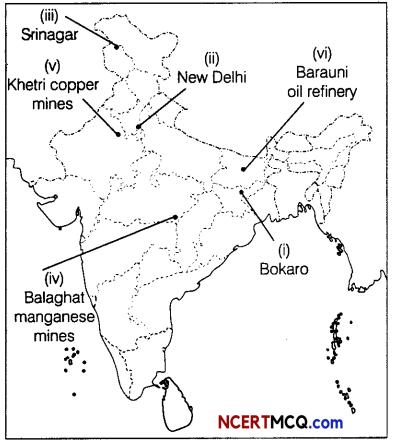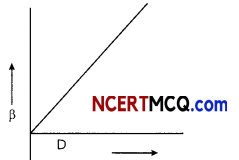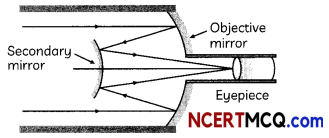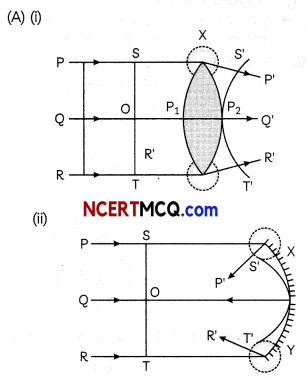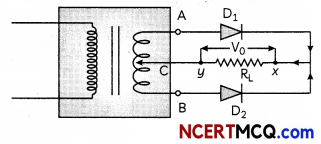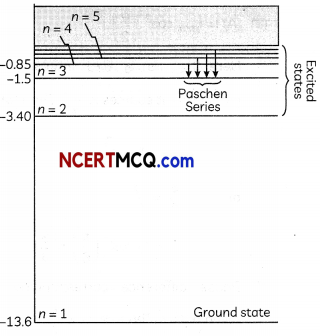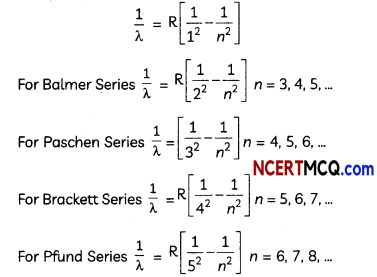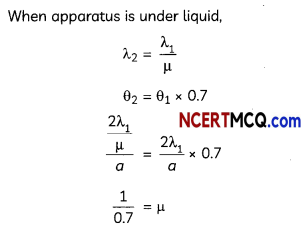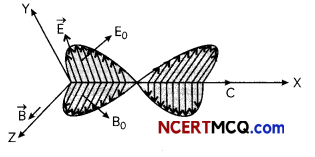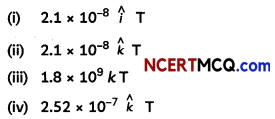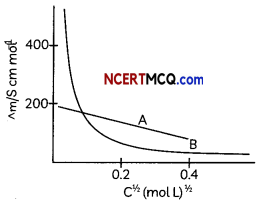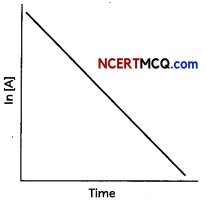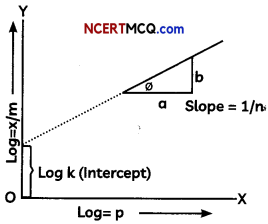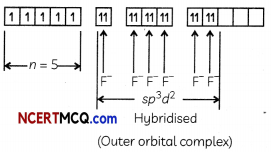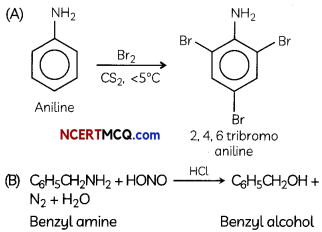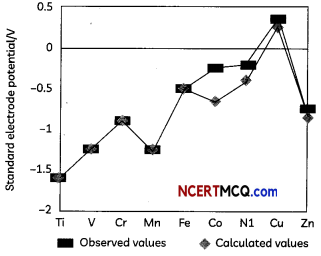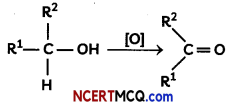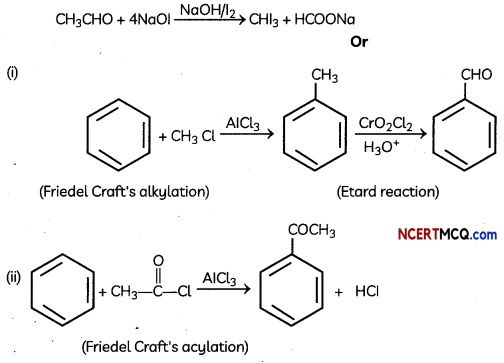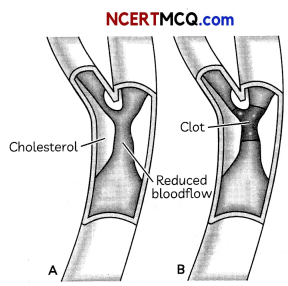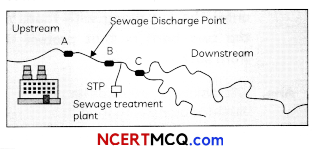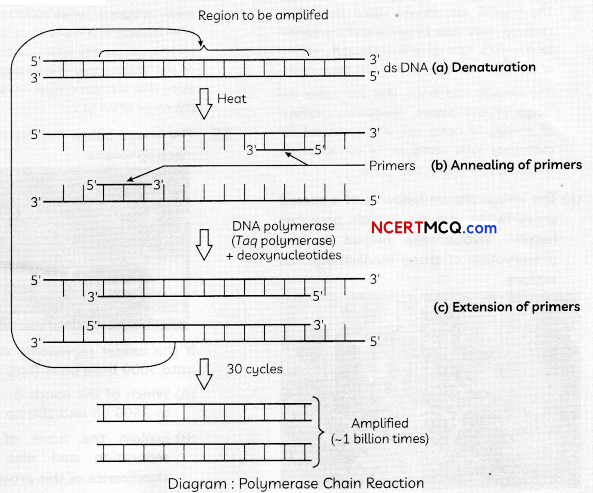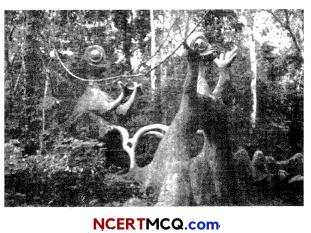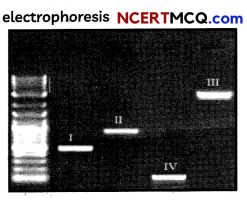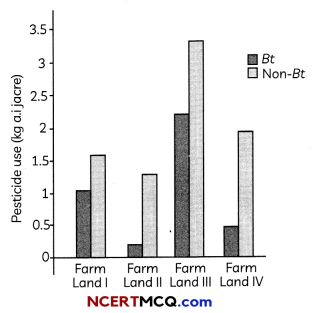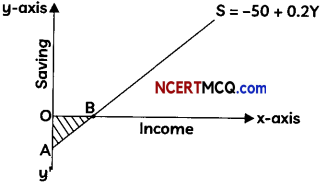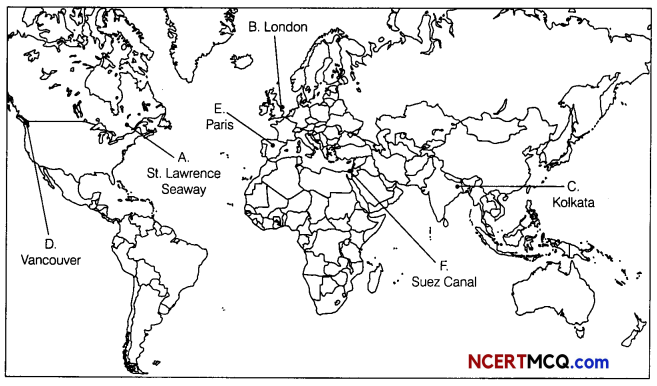Students can access the CBSE Sample Papers for Class 12 Hindi with Solutions and marking scheme Term 2 Set 2 will help students in understanding the difficulty level of the exam.
CBSE Sample Papers for Class 12 Hindi Term 2 Set 2 with Solutions
Time Allowed: 2 Hours
Ma×imum Marks: 40
सामान्य निर्देश :
- निम्नलिखित निर्देशों को बहुत सावधानी से पढ़िए और उनका पालन कीजिए:
- इस प्रश्न पत्र में वर्णनात्मक प्रश्न पूछे गए हैं।
- इस प्रश्न पत्र में कुल सात प्रश्न पूछे गए हैं। आपको सात प्रश्नों के उत्तर देने हैं।
- प्रश्नों में आंतरिक विकल्प भी दिए गए हैं। निर्देशानुसार उत्तर दीजिए।
कार्यालयी हिंदी और रचनात्मक लेखन [20 अंक]
प्रश्न 1.
निम्नलिखित दिए गए तीन शीर्षको में से किसी एक शीर्षक का चयन कर लगभग 200 शब्दों में एक रचनात्मक लेख लिखिए: (5 × 1 = 5)
(क) बारिश बिन छतरी
उत्तरः
बारिश बिन छतरी:
मुझे याद है 15 जुलाई, 2020 का वह ऐतिहासिक दिन जो अविस्मरणीय घटना के रूप में मेरे मानस पटल पर मेरी अंतिम साँस तक अटल रहेगा। शुक्रवार का दिन था। सवेरे सात बजे मैं घर से स्कूल के लिए निकला। आसमान पर बादलों का नामोनिशान तक नहीं था। माँ ने मुझे कहा था की छाता ले जाओ पर मैंने मना कर दिया। हर बार बरसात के मौसम में एक दो छाते मेरी लापरवाही की वजह से किसी और का भला कर रहे होते। मैं घर से निकला ही था की अचानक बादलों ने मेरे सिर पर छाता तान दिया। मैं जितना आगे बढ़ता जाता बादल भी उसी गति से मेरा पीछा करते जा रहे थे। मुझे ऐसा लग रहा था कि माँ की बात न मानने की सजा बादल मुझे दे रहे हैं। मुझे ऐसा लग रहा था कि वे मेरे घर से निकलने का ही इंतजार कर रहे थे। मुझे स्कूल के लिए देर हो रही थी इसलिए मैं कहीं शरण भी नहीं ले सकता था। भीगते-भीगते मैं स्कूल पहुँच तो गया पर गीले कपड़ों में मुझे ठण्ड लगने लगी थी। आज पहले कालांश में गणित का टेस्ट और था। कंगाली में आटा गीला होने वाली बात हो गई थी। गणित का भार भी मुझे बिना वजह ढोना पड़ता था। गणित भी मेरे लिए भूतप्रेत से कम नहीं है। गणित के शिक्षक के सामने मेरी जुबान भी नहीं खुलती थी। पर उनके देखने मात्र से ही मेर कपड़े सूख गए। उस दिन मेरा टेस्ट नहीं हुआ। अगले दिन स्कूल जाने का मेरा बिल्कुल मन नहीं था पर माँ ने कहा कि गणित के शिक्षक ने उन्हें फोन किया था कि मुझे आज टेस्ट देने के लिए स्कूल जाना होगा। मन मारकर मैं गया और टेस्ट दिया।
![]()
(ख) सैर के दौरान घटी हुई घटना
उत्तरः
सैर के दौरान घटी हुई घटना:
अभी पिछले सप्ताह की बात है। मैंने अपने दो मित्रों के साथ आमेर घूमने का कार्यक्रम बनाया। नियत समय पर हम लोग गाड़ी लेकर निकल पड़े। मौसम भी सुहाना था। धूप-छाँव की स्थिति थी। मंद-मंद हवा चल रही थी। खाते-पीते गाना गाते हम आमेर के रास्ते पर चल पड़े। बातें करते-करते हम कब आमेर पहुँच गए इसका पता ही नहीं चला। वहाँ पहुँच कर हमने निश्चय किया कि आमेर मंदिर तक का रास्ता गाड़ी से ही तय करेंगे। अबकी बार ड्राइविंग करने का निर्णय मैंने लिया। मैं बड़े धीरे-धीरे और सावधानी से गाड़ी को चढ़ाई पर ले जा रह था। अचानक ही जोर के धक्के से गाड़ी रुक गई और नीचे की ओर जाने लगी। हम सब घबरा गए। मैंने जल्दी से हैण्ड ब्रेक खींचा ओर गाड़ी को नीचे जाने से रोका। हम सभी मित्रों के चेहरे पर चिंता के भाव स्पष्टतया नजर आने लगे थे। हमारी गाड़ी को रुका हुआ देखकर पुलिस का एक सिपाही हमारे पास आया और उसने हमारी चिंता का कारण पूछा। हमारे बताते ही उन्होंने हमें नीचे उतरने को कहा और स्वयं इंजन का निरीक्षण करने लगे। पाँच मिनट बाद ही गाड़ी का इंजन शुरू हो गया। हमने उनका धन्यवाद किया और बढ़ चले आगे की ओर। बस कुछ ही पलों में हम मंदिर के सामने थे। वहाँ हमने दर्शन किए और फिर खब मजे किए। शाम को चार बजे हम अपने घर लौट आये।
(ग) सफर में बस का टायर पंक्चर होना
उत्तरः
सफर में बस का टायर पंक्चर होना:
गत वर्ष मेरे ममेरे भाई की शादी थी। नवम्बर का महीना था। उस महीने में शादियाँ बहुत थीं इसलिए रेलगाड़ी में आरक्षण मिला नहीं सो हमने बस से जाने का निश्चय किया। मैं, मेरा छोटा भाई, माताजी, पिताजी और दादाजी, हम सब नियत दिन बस से यात्रा करने के लिए बस स्टैंड पहुँच गए। बस चलने का समय शाम 6 बजे का था और सात बजे तक वह वहां से चली ही नहीं। लगभग सवा सात बजे बस लखनऊ के लिए रवाना हुई। 9 बजे बस एक स्थान पर रुकी। वहां पर हमने खाना खाया। साढ़े नौ बजे बस गंतव्य के लिए रवाना हुई। हमें नींद आने लगी थी। बस के सभी यात्री ऊंघने लगे थे। बस में हिचकोले खाते हुए सोने का मजा ही कुछ ओर है। अचानक हिचकोले आने बंद हो गए। आँख खुली तो देखा कि बस रुकी हुई है। खिड़की से बाहर झाँका तो दूर तक बीहड़ वन और अँधेरे के खाना अलावा कुछ भी नजर नहीं आ रहा था। आधा घंटा हो चुका था और बस रवाना ही नहीं हुई थी। ड्राइवर ने बताया कि टायर पंक्चर हो गया है। सर्दी बढ़ती जा रही थी और साथ-साथ हमारे मन की घबराहट भी क्योंकि ड्राइवर ने बताया कि नए टायर का इंतजाम सुबह तक ही हो पायेगा इसलिए सबको बस में ही रात गुजारनी होगी। वन में और बस में रात बिताने का यह नितांत नया अनुभव था। खैर सोते जागते ऊँघते किसी तरह रात गुजरी और सुबह की किरण एक नयी आशा के साठ आई। बस का टायर बदला गया और हम अपने गंतव्य पहुंचे।
![]()
प्रश्न 2.
आप राजकीय उच्च माध्यमिक विद्यालय, आगरा में कक्षा 10 में पढ़ने वाले अनुज हैं। आपकी कक्षा में एक महीने से गणित की पढ़ाई नहीं हो पा रही है। इसकी जानकारी देते हुए प्रधानाचार्या जी को पत्र लिखिए।
अथवा
आपके नगर के चिकित्सालय में एक ही चिकित्सक होने के कारण रोगियों को बड़ी ही असुविधा का सामना करना पड़ रहा है। इसकी जानकारी देते हुए प्रान्त के
चिकित्सा विभाग के सचिव को पत्र लिखिए। (5)
उत्तरः
सेवा में
प्रधानाचार्या महोदय
राजकीय उच्च माध्यमिक विद्यालय
आगरा
दिनांक: 4 अक्टूबर 20XX
विषय: गणित विषय की पढ़ाई में व्यवधान की जानकारी देने हेतु।
महोदय
निवेदन है कि मैं आपके विद्यालय के कक्षा दस का छात्र हूँ। हमारी कक्षा में पिछले एक महीने से गणित की पढ़ाई नहीं हो रही है। ज्ञातव्य है कि हमारे गणित के अध्यापक श्रीमान् रमेश पाण्डेय जी का गत महीने एक्सीडेंट हो गया था। इस कारण वह विद्यालय आने में असमर्थ हैं। तभी से हमारी गणित की पढ़ाई में व्यवधान आ गया है। आपने इसकी पूर्ति के लिए वैकल्पिक व्यवस्था करते हुए श्रीमान सुरेश जी को हमारी कक्षा का भार सौंपा था। वे पूरे मनोयोग से पढ़ा रहे थे और विद्यार्थी भी उनसे संतुष्ट थे पर अचानक ही उनकी माताजी को हृदयाघात आने से वे भी अवकाश पर चले गए हैं। इस प्रकार हमारी पढ़ाई में फिर से व्यवधान आ गया। ज्ञातव्य है कि हमारी अर्धवार्षिक परीक्षाएँ भी अगले महीने हैं।
अतः मेरी आपसे करबद्ध विनती है कि आप हमारी इस समस्या पर ध्यान देते हुए हमारी पढ़ाई की कोई उचित व्यवस्था करें और अतिरिक्त कक्षा लगवाने की व्यवस्था करें जिससे हमें अध्ययन में किसी प्रकार की रूकावट न आए। आशा है आप मेरी बात को समझेंगे और इस पर तुरंत कार्यवाही करेंगे।
धन्यवाद।
आपका आज्ञाकारी शिष्य
क.ख.ग.
कक्षा : दसवीं ‘अ’
अथवा
4, दुर्गापुरा रोड
जयपुर।
दिनांक: 4 अक्टूबर 20XX
सचिव महोदय
स्वास्थ्य मंत्रालय
राजस्थान सरकार
जयपुर
विषय: चिकित्सकों के अभाव की जानकारी देने हेतु।
महोदय
इस पत्र के माध्यम से मैं आपका ध्यान हमारे क्षेत्र के चिकित्सालय की ओर दिलाना चाहता हूँ। हमारे शहर में हर नागरिक को सारी सुविधाएँ प्राप्त हो रही हैं। पर एक मुख्य समस्या का सामना यहाँ के निवासियों को करना पड़ रहा है और वह है चिकित्सालय में चिकित्सकों का अभाव।
हमारे इलाके में जो सरकारी चिकित्सालय है उसमें सभी आधुनिक सुख सुविधाएँ हैं पर वहाँ केवल एक चिकित्सक के होने के कारण रोगियों को बड़ी ही असुविधा होती है। उनको दिखाने के लिए बड़ी ही लम्बी लाइन लगती है और अनेक बार ऐसा होता है कि कई रोगियों को तो बिना दिखाए ही निराश होकर लौटना पड़ता है। विवश होकर उन्हें स्वयं को प्राइवेट अस्पताल में दिखाना पड़ता है। वहाँ का खर्चा इतना होता है कि बेचारे निर्धन वर्ग वाले तो वहाँ जा भी नहीं पाते।
अतः आपसे निवेदन है कि आप हमारी समस्या को समझेंगे और हमारे इलाके में दो नए चिकित्सकों की नियुक्ति करेंगे जिससे किसी भी मरीज को चिकित्सालय से निराश होकर नहीं लौटना पड़े।
धन्यवाद सहित।
प्रार्थी
क.ख.ग.
![]()
प्रश्न 3.
(क) नाटक में कथावस्तु के महत्व को प्रतिपादित कीजिए।
अथवा
कहानी के इतिहास पर प्रकाश डालिए। (3)
उत्तरः
नाटक में कथावस्तु का बहुत महत्व है। वास्तव में कथावस्तु को ‘नाटक’ की संज्ञा दी गई है। इसे अंग्रेजी में ‘प्लाट’ कहते हैं। कथा सभी रचनाओं की रीढ़ होती है इसलिए यह सभी प्रबंधात्मक रचनाओं में अनिवार्य है। भारतीय आचार्यों द्वारा नाटक में तीन प्रकार की कथाओं का निर्धारण किया है प्रख्यात, उत्पाद्य और मिस्र प्रख्यात कथा। इतिहास, पुराणों से प्राप्त कथा प्रख्यात कथा होती है और कल्पना पर आश्रित कथा उत्पाद्य कथा होती है। मिस्र प्रख्यात कथा में इतिहास और कल्पना दोनों का ही योग होता है। इनके आधारों पर नाटक कथा को मुख्य, गौण और प्रासंगिक भागों में बाँटा गया है। प्रासंगिक के दो भाग पताका और प्रकरी हैं। पताका मुख्य कथा के साथ-साथ चलती है और प्रकरी बीच में ही समाप्त हो जाती है नाटक को अपनी कथावस्तु की योजना में पात्रों और घटनाओं में इस प्रकार संगति बैठानी होती है कि पात्र अपने अभिनय के साथ न्याय कर सकें।
अथवा
कहानी का इतिहास उतना ही पुराना है जितना मानव इतिहास। कहानी मानव स्वभाव और प्रकृति का अंग है। जैसे-जैसे आदिम मानव ने अपना विकास आरम्भ किया वैसे-वैसे ही कहानी ने अपना विकास किया। कथावाचक कथा सुनाते थे। उनकी कथा का कथानक युद्ध, प्रेम और प्रतिशोध आदि के किस्से होते थे। मानव मन कल्पना के सागर में गोते लगाता है इसलिए उसकी कथाओं में कल्पनाओं का भंडार होता था। सच्ची घटनाओं पर आधारित कहानी सुनाते-सुनाते मनुष्य उसमें कल्पनाओं का मिश्रण करने लगा। इसका प्रमुख कारण यह था कि मनुष्य को अच्छा लगता है, वह उसे ही सुनना चाहता है। प्राचीनकाल से कहानी ने विराट स्वरूप धारण कर लिया था क्योंकि पूर्व समय में इसके अतिरिक्त मनोरंजन का कोई और साध न नहीं था। इस प्रकार कहानी प्राचीन समय से आज तक अपना प्रभुत्व जमाए हुए है।
(ख) कविता अन्य कलाओं की तरह सिखाई क्यों नहीं जा सकती?
अथवा
रेडियो नाटक और सिनेमा में मुख्य अंतर क्या (2)
उत्तरः
कविता अन्य कलाओं की तरह सिखाई नहीं जा सकती। चित्रकला में रंग, कूची, कैनवास और संगीत में वाद्य यंत्र, स्वर, ताल आदि की आवश्यकता पड़ती है परन्तु कविता में किसी बाह्य उपकरण की आवश्यकता भी नहीं होती और न ही किसी बाह्य उपकरण की मदद ली जा सकती है। कवि के सामने एक प्रमुख समस्या यह भी होती है कि उसकी सीमा केवल शब्दों तक ही निर्धारित होती है। उसे अपनी इच्छानुसार ही शब्दों को जुटाकर उसे लयबद्ध करना होता है इसलिए अन्य कलाओं की तरह इसे सिखाया नहीं जा सकता।
अथवा
रेडियो नाटक और सिनेमा में सबसे बड़ा अंतर यह है कि जहाँ रेडियो पूरी तरह से श्रव्य माध्यम है वहीं सिनेमा श्रव्य और (दृश्य दोनों है। इस आधार पर रेडियो नाटक इनसे भिन्न भी है और मुश्किल भी। रेडियो नाटक में सब कुछ संवादों और ध्वनि प्रभावों के आधार पर संप्रेषित किया जाता है। वहाँ न तो मंच सज्जा है और न ही वस्त्र सज्जा। सब कुछ जैसा था, वैसा ही रह जाता है। कहानी की शुरुआत मध्य-अंत, परिचय-द्वंद्व-समाधान आदि सब कुछ केवल ६ वनि और संवादों के आधार पर ही संप्रेषित योग्य होता है।
प्रश्न 4.
(क) बाढ़ की भयानक विभीषिका विषय पर रिपोर्ट लिखिए।
अथवा
‘बचपन की पढ़ाई लक्ष्य का सोपान’ विषय पर आलेख लिखिए। (3)
उत्तरः
इस वर्ष तो बाढ़ के कारण लाखों लोग घर से बेघर हो गए। अनेक गाँव पानी में समा गए। कुछ लोग तो अन्य स्थान पर रहने वाले अपने संबंधियों के घर चले गए और कुछ लोगों ने राहत शिविर की शरण ली। राहत शिविर में रहने वाले लोगों की समस्याओं का तो कोई अंत ही नहीं है। घर से बेघर होने जैसी भयानक समस्या तो कोई हो ही नहीं सकती और जब लोगों को टेंट, शामियानों में रहने को विवश होना पड़े तो जिंदगी बद से बदतर हो जाती है। सब कुछ सामूहिक हो जाता
है।
घर से बेघर होने पर लोगों के काम-धंधे, पढ़ाई-लिखाई सब चौपट हो जाती है। बाढ़ के कारण इन स्थानों पर अनेक बीमारियाँ फैलने का खतरा बढ़ जाता है। लोगों का निजी जीवन समाप्त-सा हो जाता है। जब इन स्थानों में राहत सामग्री का वितरण होता है तो व्यक्ति खुद को भिखारी-सा समझने लगता है और उसका आत्मसम्मान नष्ट हो जाता है। राजनीतिक दलों के बड़े-बड़े लोग और कथित नेता लोग इस अवसर भी अपनी चुनावी रोटियाँ सेंकने से बाज नहीं आते। ईश्वर किसी को ऐसा दिन न दिखाए।
अथवा
प्रत्येक बच्चा कच्ची मिट्टी का वह लोंदा होता है जिसे मनचाहे आकार में ढाला जा सकता है और बचपन के अनुभव ही उसकी क्षमताओं का विकास कर उसे दुनिया में भले-बुरे का ज्ञान करवाने में सहायक होते हैं। यही बचपन की पढ़ाई निर्धारित करती है कि बच्चा बड़े होकर किस प्रकार का इन्सान बनेगा। इसके लिए हमारे देश में विद्यालयों की कमी नहीं है। ये विद्यालय ही बच्चे की सोच को विकसित कर उसे सही दिशा दिखाने में अपनी अहम भूमिका का निर्वाह करते हैं।
बच्चा एक नियत अवधि के लिए विद्यालय में रहता है। विद्यालय कंक्रीट की बनी हुई इमारत होती है जहाँ हर बच्चे को एक-सा वातावरण मिलता है और अपनी उम्र के बच्चों के साथ पढ़ने का अवसर मिलता है। जितना समय वह विद्यालय में गुजारता है उसे भी अलग-अलग कालांशों में बाँट दिया जाता है। हर विषय के लिए कालांश निर्धारित होता है। पढ़ाई के अतिरिक्त उनमें से कुछ कालांश खेल-कूद और अन्य गतिविधियों के लिए भी निर्धारित होते हैं बच्चे के लिए विशेष परिधान निर्धारित होता है और अनशासन व नियमों का पालन उसे करना पड़ता है। इससे वह अपनी जिंदगी का पहला सबक सीखता है कि दुनिया कुछ नियम-कायदों से बंधी हुई है और इसका पालन सबको करना सजा भुगतनी पड़ सकती है और इनका पालन करना आपको एक सफल मनुष्य बना सकता है। हर विद्यालय में प्रबंधन समिति द्वारा प्रत्येक कक्षा के लिए पुस्तकें निर्धारित होती हैं। इनमें कुछ तथ्य और आंकड़े होते हैं जिनका अध्ययन हर बच्चा करता है। यह बच्चे की क्षमता पर निर्भर करता है कि वह क्या और कितना सीखता है और उसे किस प्रकार अपनी दिनचर्या में शामिल करता है। उसका यही सोपान का काम करता है। जिससे वह अपने जीवन में एक सफल नागरिक बन सकता है।
(ख) ‘गाँवों से शहरों की ओर’ विषय पर आलेख लिखिए।
अथवा
गैस सिलेंडर में रिफिलिंग से हुए धमाके की घटना का समाचार लिखें। (2)
उत्तरः
आज जब सारा विश्व एक ही परिवार बनता जा रहा है तो लोग भी गाँव से शहरों की ओर पलायन कर रहे हैं पर आज भी भारत माता ग्रामवासिनी ही है। पढ़ने-लिखने के बाद आज हर युवा शहर में ही रहना चाहता है। वहाँ की चकाचौंध और सुविधाओं से भरा हुआ जीवन मनुष्य को अपनी तरफ आकर्षित करता है। इस कारण लोगों ने गांवों पर ध्यान देना कम कर दिया और वर्तमान में गाँव हीन और उजाड़ होते जा रहे हैं।
न वहाँ सड़के हैं, न परिवहन के साधन, न बिजली, न अच्छे स्कूल कॉलेज और न ही अच्छी चिकित्सा व्यवस्था। अब तो खेती करने के लिए बीज आदि सामग्री भी शहर से लानी पड़ती है। फसलें काटने के बाद उन्हें भी बेचने के लिए शहर ही जाते हैं। शहर में पक्के मकान हैं और सभी सुविधाओं का डेरा है इसलिए वहाँ गया हुआ व्यक्ति अपने मन में शहरों की ढेर सारी यादें लेकर लौटता है।
गाँव और शहर के जीवन में इतना अधिक असंतुलन नहीं होना चाहिए। सरकार को गाँवों की दशा को सुधारना चाहिए जिससे लोग वहाँ से कहीं और जाने की न सोचें।
अथवा
नोएडा, संवाददाता चौड़ा गाँव में बुधवार को छोटे सिलेंडर में गैस रिफिललग के दौरान आग लग गई। आग तीन बड़े सिलेंडरों में भी जा लगी जिससे जोरदार धमाका हुआ और दुकान की छत उड़ गई। इस घटना में कोई हताहत नहल हुआ लेकिन पड़ोसी की बिजली की एक दुकान का सारा सामान जल गया है। दुकानदारों ने एफआईआर दर्ज कराने के साथ ही प्रशासन ने भी रिफिललग करने वाले के खिलाफ रिपोर्ट दर्ज कराई है। सोनू भारद्वाज की गैस रिफिललग की दुकान में बुधवार सुबह 11 बजे पाँच किलों के सिलेंडर में रिफिललग के दौरान बर्नर की जाँच करते हुए आग लग गई। सोनू आग लगते ही मौके से भाग गया। देखते ही देखते चार सिलेंडरों में धमाके हुए और दुकान की छत उड़ गई। सूचना पर पुलिस और दमकल की गाड़ियाँ मौके पर पहुँची। दमकल की चार गाडियों ने सोनू की दूकान तथा देवेंद्र की बिजली के सामान की दुकान में लगी आग को बुझाया।
![]()
पाठ्यपुस्तक आरोह भाग-2 तथा अनुप पूरक पाठ्यपुस्तक वितान भाग-2 [20 अंक]
प्रश्न 5.
निम्नलिखित तीन प्रश्नों में से किन्हीं दो प्रश्नों के उत्तर दीजिए। (3 × 2 = 6 )
(क) फ़िराक की रुबाइयों में हिंदी का घरेलू रूप दिखाई देता है। उदाहरण द्वारा सिद्ध कीजिए।
उत्तरः
फ़िराक गोरखपुरी उर्दू के शायर हैं। उनकी रुबाइयों को पढ़कर लगता है कि उन्हें हिंदी भाषा का भी ज्ञान था। उन्होंने अपनी रुबाइयों में हिंदी भाषा के लोक प्रचलित रूपों का बहुत ही स्वाभाविक रूप से प्रयोग किया है। ‘चाँद का टुकड़ा’, ‘लोका देना’, कपड़े पिन्हाना’ आदि घरेलू हिंदी के ही उदाहरण हैं। घरेलू शब्दों के प्रयोग के कारण ही उनकी रुबाइयों को अनपढ़ व्यक्ति भी पढ़कर उनका आनंद उठा सकता है। कुछ उदाहरण के उच्चारण तो बहुत ही सुंदर बन पड़े हैं। जैसे ‘बालक तो हई चाँद पे ललचाया है।’ इस पंक्ति में ‘हई’ शब्द का उच्चारण अत्यंत ही सुंदर और स्वाभाविक है।
(ख) कविता के किन उपमान को देखकर यह कहा जा सकता है कि उषा कविता गाँव की सुबह का गतिशील शब्द चित्र है?
उत्तरः
कविता में वर्णित राख से लिखा हुआ चौका, काली सिल, स्लेट पर लाल खड़िया चाक आदि उपमानों से पता चलता है कि कवि ने गाँव के परिवेश को आधार बनाकर उषाकालीन प्रकृति का सुंदर चित्रण किया है। महानगरों में कहीं भी न तो लीपा हुआ चौका देखा जा सकता है, न ही स्लेट और न ही खड़िया चाक। सभी शब्दचित्र गाँव से संबंधित हैं। गाँव के प्रत्येक घर में प्रातः काल होने के बाद पहले चौका लीपा जाता है। ततपश्चात सील का प्रयोग होता है। और फिर कुछ देर बाद बालक को स्लेट दी जाती है। अतः यहाँ कवि ने ग्रामीण जनजीवन के गतिशील चित्र अंकित किए हैं।
(ग) शोकग्रस्त माहौल में हनुमान के अवतरण को करुण रस के बीच वीर रस का आविर्भाव क्यों कहा गया है?
उत्तरः
वैद्य सुषेण ने कहा था कि अगर प्रातः होने से पूर्व संजीवनी बूटी मिल गई तो लक्ष्मण बच सकता है अन्यथा उसकी मृत्यु हो जाएगी। अर्द्धरात्रि बीत चुकी थी और हनुमान अभी तक लौट कर नहीं आया था। संपूर्ण भालू और वानर सेना घबराई हुई थी। राम भी लक्ष्मण की मृत्यु के डर के कारण घबरा गए थे। और वे भावुक होकर विलाप करने लगे, परंतु इस बीच हनुमान संजीवनी बूटी लेकर पहुँच गए। हनुमान को देखकर राम के विलाप में आशा और उत्साह का संचार हो गया क्योंकि अब सभी को आशा बंध गई थी कि लक्ष्मण होश में आ जाएँगे और फिर रावण पर विजय प्राप्त की जा सकेगी।
प्रश्न 6.
निम्नलिखित चार प्रश्नों में से किन्हीं तीन प्रश्नों के उत्तर दीजिए (3 × 3 = 9 )
(क) मानचित्र पर एक लकीर खींच देने से ज़मीन और जनता नहीं बंट जाती- ‘नमक’ कहानी के आधार पर कथन की सत्यता सिद्ध कीजिए।
उत्तरः
कटु राजनीति के कारण देश के टुकड़े हो जाते हैं। ज़मीन तो बंट जाती है पर लोगों के मन का बँटवारा नहीं हो पाता। यह सत्य है कि मानचित्र पर एक लकीर खींच देने से हम देश को तो बाँट सकते हैं पर जमीन और जनता को नहीं बाँट सकते। भारत भी कटु राजनीति का शिकार रहा है। भारत आज पाकिस्तान और बांग्लादेश के कारण तीन टुकड़ों में बँटा हुआ है पर लोगों के दिलों में किसी भी तरह कि कोई दरार नहीं है। आज भी उनमें वही प्रेम और भाईचारा कायम है। इस कहानी में पाकिस्तानी कस्टम और भारतीय कस्टम दिल्ली और ढाका को आज भी अपना वतन मानते हैं। सिख बीबी लाहौर को अपना वतन मानती है और वहीं का नमक चाहती है। इसी प्रकार भारतीय कस्टम अधिकारी ढाका के नारियल पानी को स्वादिष्ट मानता है। वे एक दूसरे की भावनाओं की कद्र करते हैं।
(ख) आदर्श समाज की स्थापना में डॉक्टर आंबेडकर के क्या विचार थे?
उत्तरः
डॉ आम्बेडकर ने आदर्श समाज की स्थापना के लिए जन्मजात समानता का विचार दिया है। उनका मानना है कि श्रम विभाजन जन्म और जाति पर न होकर रूचि के आधार पर होना चाहिए। हम उनके इस विचार से पूर्णतया सहमत हैं। अभी तो कुछ लोग जन्म से ही स्वयं को ऊँचा मानते हैं और कुछ लोग लोग स्वयं को नीचा मानते हैं। इससे जाति प्रथा बढती है। और समाज में असमानता भी बढती है। यदि सबको अपनी-अपनी रूचि के अनुसार काम चुनने को अवसर मिलेगा तो उन्हें सबसे बराबर का सम्मान मिलेगा। ऐसा ही समाज सुखी और संतुष्ट होता है।
![]()
(ग) शारीरिक वंश-परंपरा और सामाजिक उत्तराधिकार की दृष्टि से मनुष्यों में असमानता संभावित रहने के बावजूद आंबेडकर समता’ को एक व्यवहार्य सिद्धांत मानने का आग्रह क्यों करते हैं? इसके पीछे उनके क्या तर्क हैं?
उत्तरः
शारीरिक वंश परंपरा और सामाजिक उत्तराधिकार की दृष्टि से मनुष्यों में असमानता संभावित रहने के बावजूद आंबेडकर समता को एक व्यवहार्य सिद्धांत मानने का आग्रह इसलिए करते हैं क्योंकि प्रत्येक व्यक्ति को अपनी क्षमता का विकास करने के लिए समान अवसर मिलने चाहिए। वे शारीरिक वंश परंपरा व सामाजिक उत्तराधिकार के आधार पर असमान व्यवहार को अनुचित मानते हैं। उनका मानना है कि समाज को यदि अपने सदस्यों से अधिकतम उपयोगिता प्राप्त करनी है तो उसे समाज के सदस्यों को आरंभ से ही समान अवसर व समान व्यवहार उपलब्ध करवाने चाहिए। राजनीतिज्ञों को भी सबके साथ समान व्यवहार करना चाहिए । समान व्यवहार और स्वतंत्रता का सिद्धांत ही समता का प्रतिरूप है। सामाजिक उत्थान के लिए समता का होना अनिवार्य हैं।
(घ) ‘ढोल में तो जैसे पहलवान की जान बसी थी। पहलवान की ढोलक पाठ के आधार पर सिद्ध कीजिए।
उत्तरः
लुट्टन सिंह जब जवानी के जोश में आकर चाँद सिंह नामक मंजे हुए पहलवान को ललकार बैठा तो सारा जनसमूह, राजा और पहलवानों का समूह आदि की यह धारणा थी कि यह कच्चा किशोर जिसने कुश्ती कभी सीखी नहीं है, पहले दाँव में ही देर हो जाएगा। हालाँकि लुट्टन सिंह की नसों में बिजली और मन में जीत का जज्बा उबाल खा रहा था। उसे किसी की परवाह न थी। हाँ, ढोल की थाप में उसे एक एक दाँव पेंच का मार्गदर्शन जरूर मिल रहा था। उसी थाप का अनुसरण करते हुए उसने ‘शेर के बच्चे को खूब धोया, उठा-उठाकर पटका और हरा दिया। इस जीत में एकमात्र ढोल ही उसके साथ था। अतः जीतकर वह सबसे पहले ढोल के पास दौड़ा और उसे प्रणाम किया।
प्रश्न 7.
निम्नलिखित प्रश्नों के उत्तर दीजिए। (3 + 2 = 5)
(क) सिंधु घाटी की सभ्यता कैसी थी? तर्क सहित उत्तर दें।
अथवा
19 मार्च, 1943 की चिट्ठी में ऐन ने गिल्डर मुद्रा के बारे में क्या बताया है? इससे क्या परेशानी आ गई थी?
उत्तरः
लेखक के मतानुसार सिंधु घाटी की सभ्यता ‘लो-प्रोफाइल’ सभ्यता थी। दूसरे स्थानों पर खुदाई करने से राजतंत्र को प्रदर्शित करने वाले महल धर्म की ताकत दिखाने वाले पूजा स्थल, मूर्तियाँ और पिरामिड मिले हैं जबकि मुअनजोदड़ो की खुदाई के दौरान न तो राजप्रसाद ही मिले और न ही मंदिर। यहाँ किसी राजा अथवा महंत की समाधि भी मिली। यहाँ जो नरेश की मूर्ति मिली है उनके मुकुट का आकार बहुत छोटा है। इतना छोटा कि इससे छोटे सिरपंत्र की कल्पना भी नहीं की जा सकती। इन लोगों की नावों का आकार भी ज्यादा बड़ा नहीं था। इन आधारों पर कहा जा सकता है कि सिंधु घाटी की सभ्यता आडंबरहीन सभ्यता थी। ऐसी सभ्यता जो छोटी होते हुए भी महान थी। जो विश्व की प्राचीनतम संस्कृति थी।
अथवा
ऐन बताती है कि हज़ार गिल्डर के नोट अवैध मुद्रा घोषित किए जा रहे हैं। यह ब्लैक मार्केट का धंधा करने वालों और उन जैसे लोगों के लिए बहुत बड़ा झटका होगा। उससे बड़ा संकट उन लोगों का है जो या तो भूमिगत हैं या जो अपने धन का हिसाब-किताब नहीं दे सकते । हज़ार गिल्डर का नोट बदलवाने के लिए आप इस स्थिति में हों कि ये नोट आपके पास आया कैसे और उसका सुबूत भी देना होगा। इन्हें कर अदा करने के लिए उपयोग में लाया जा सकता है; लेकिन अगले हफ्ते तक ही। पाँच सौ गिल्डर के नोट भी तभी बेकार हो जाएँगे। गिएड एंड कंपनी के पास अभी हजार गिल्डर के कुछ नोट बाकी थे जिनका कोई हिसाब-किताब नहीं था। इन्हें कंपनी ने आगमी वर्षों के लिए अनुमानित कर अदायगी में निपटा दिया है।
![]()
(ख) ‘अतीत में दबे पाँव’ पाठ के आधार पर शीर्षक की सार्थकता सिद्ध कीजिए।
अथवा
ऐन को यह डायरी लिखने की जरूरत क्यों महसूस हुई? इस डायरी के द्वारा वह क्या कहना चाहती है?
उत्तरः
इस पाठ में लेखक ने मुअनजोदड़ो की यात्रा के समय के अपने अनुभवों के विषय में बताया है। लेखक यहाँ पर पहुँचकर पुराने सुनियोजित शहर की एक-एक चीज का सिलसिलेवार परिचय करवाता है। वह उस सभ्यता के अतीत में झाँककर वहाँ के निवासियों और क्रियाकलापों को अनुभव करता है। यहाँ की सड़कें, नालियाँ, स्तूप, स्नानागार, सभागार, अन्न भंडार, कुएँ, आदि के अलावा मकानों की सुव्यवस्था को देखकर लेखक महसूस करता है कि लोग अब भी वहाँ मौजूद हैं। उसे बैलगाड़ियों की ध्वनि सुनाई देती हैं। रसोई घर की खिड़की से झाँकने पर वहाँ पक रहे भोजन की गंध आती है। लेखक कल्पना करता है कि यदि यह सभ्यता नष्ट न हुई होती तो आज भारत महाशक्ति बन चुका होता। यह शीर्षक उपयुक्त है।
अथवा
ऐन चाहती थी कि लोग नाजियों के अत्याचारों के बारे में विस्तार से जानें। कही हुई या सुनी हुई बातों का प्रभाव ज्यादा नहीं पड़ता। यह प्रभाव स्थायी भी नहीं होता। इसलिए उसने इन बातों को लिखने का मन बनाया ताकि लोग पढ़े सच को जानें और उससे प्रभावित हों। वह लिखती है कि मैं सही बता रही हूँ कि युद्ध के दस साल बाद लोग इससे कितना चकित होंगे जब उन्हें पता चलेगा कि यहूदियों को अज्ञातवास में क्यों जाना पड़ा? यहूदियों पर कितने जुल्म हुए? ये सब बातें बताने के लिए ही ऐन ने डायरी लिखी।
